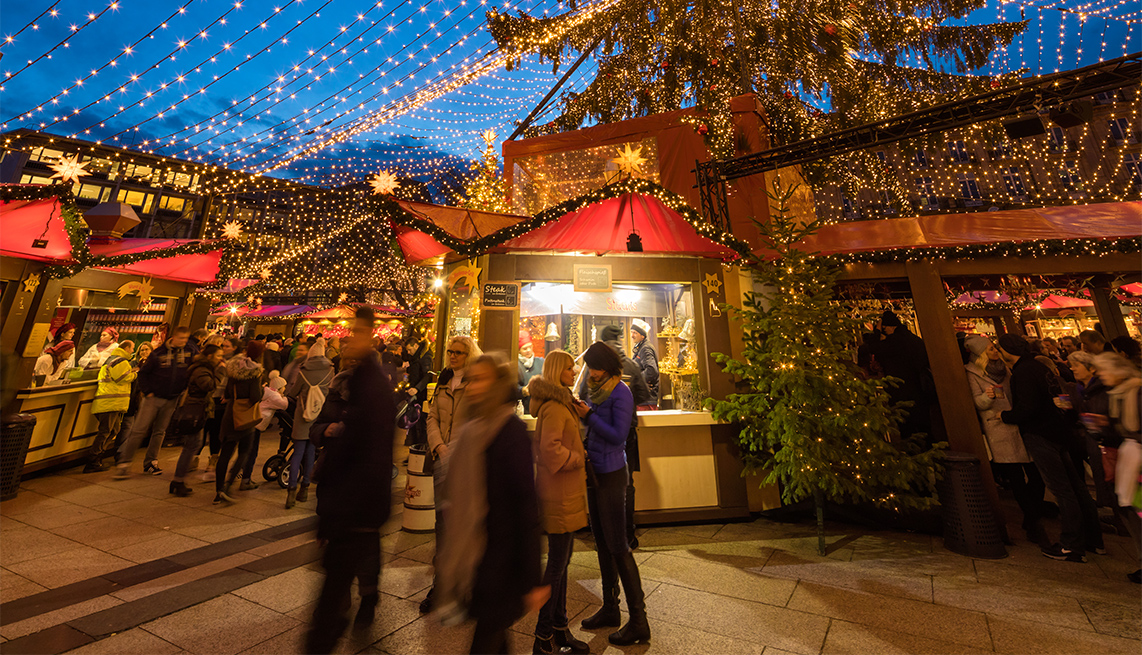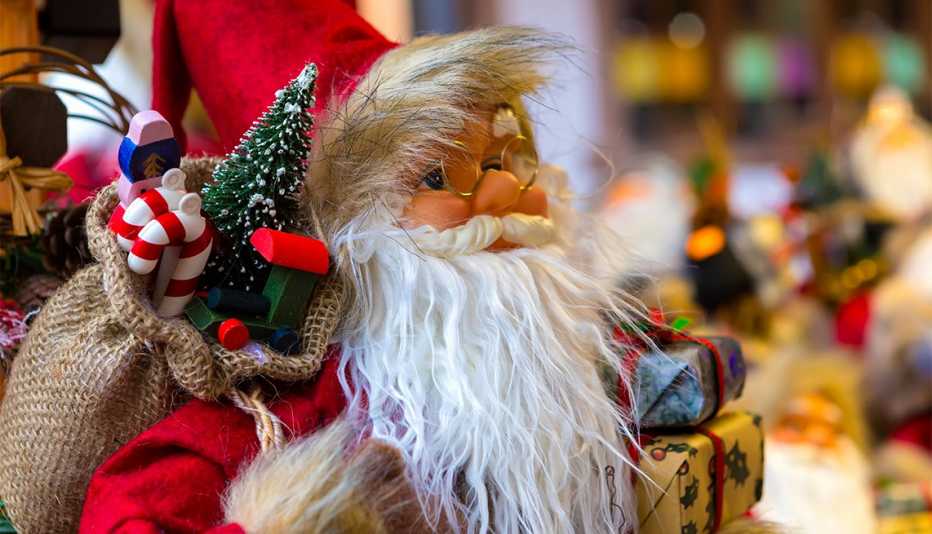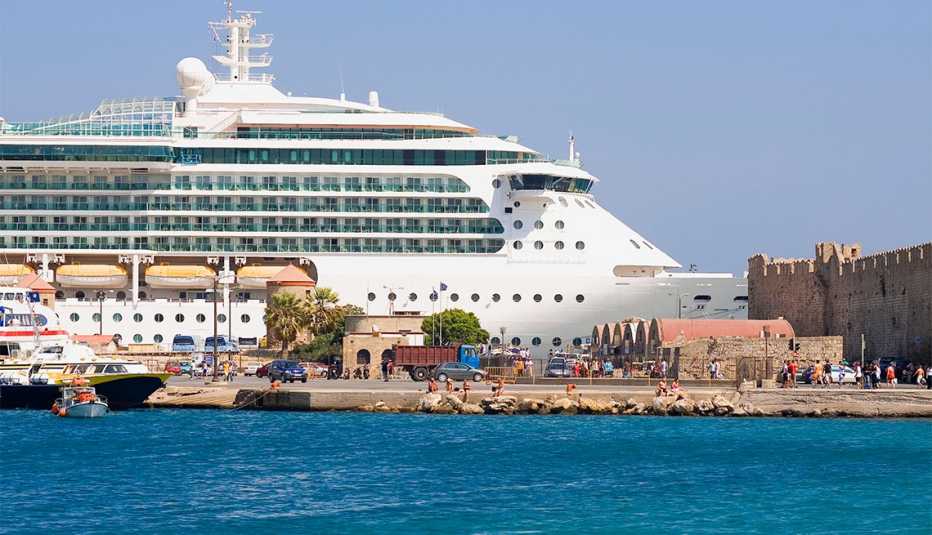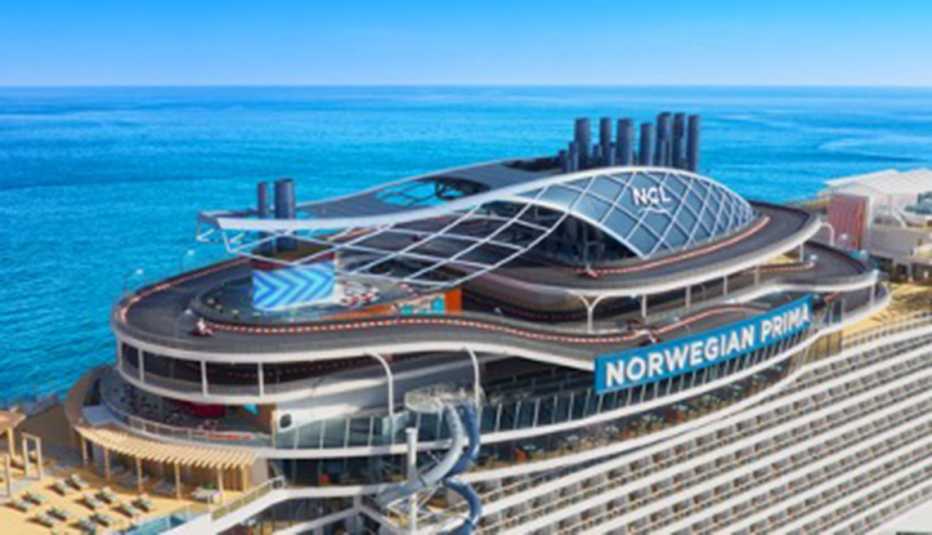AARP Hearing Center
Cruising Europe’s rivers is an increasingly popular way to explore quaint towns and historic cities in countries such as France and Germany, especially in summer. But another peak time for these journeys is around the holidays, the season for Christmas market cruises — immensely popular sailings on small river ships that offer guests easy on-and-off access to these festive markets that transform city and village centers across the continent into magical winter wonderlands.
The continued uncertainty about COVID-19 and the complicated pandemic-related entry requirements and safety measures prompted many people to skip cruising Europe in 2021 and book their Christmas cruises for 2022 or 2023 — joining travelers who rescheduled their canceled 2020 cruises for later years.
That means the 2022 holiday sailings have been filling up even faster than usual, says Susy Schreiner, owner of Azure Blue Vacations in Seattle, who started booking the 2022 holiday cruises in September to ensure her clients got their preferred choices.
If you wait, she adds, your pickings will probably be slim and you’re unlikely to get a price break because fares typically don’t dip for these popular trips.
Schreiner notes that you’ll have to pay a nonrefundable deposit but that your dates are movable. “The cruise lines know there has to be some flexibility,” she says.
Cost
COVID-19 update
• COVID-19-related rules vary by country, so travelers should do their research, and check the CDC’s country-specific recommendations.
• Check directly with the cruise line for policies regarding proof of vaccination, testing or any other requirements to board.
Prices for these cruises vary widely. You can spend as little as $1,195 per person (all prices are for double-occupancy) for a lower-deck cabin with no balcony on four-night sailings on Emerald Cruises to more than $20,000 per person for a top-of-the line suite on a 10-night sailing with the luxury Crystal line. But generally, prices on most lines run about $500 or $600 per person a night for an upper-deck cabin with a balcony.
What is a Christmas market cruise?
Europe’s oldest Christmas markets date back to the 1400s and 1500s, with Dresden, Germany, and Strasbourg, France, each claiming the oldest. Budapest, Prague and Vienna also boast some of the original markets. But over the past 20 years, these holiday people-pleasers have dramatically expanded across Europe, and in more recent years they have become increasingly popular for river cruise lines, which typically operate holiday sailings along the Danube, Main and Rhine Rivers. The cruises hit some of Europe’s top markets in Austria, France, Germany and Hungary — as well as smaller markets in the Alsace region of France and Slovakia.
“It’s just gorgeous,” says Mary Kate Beard, 77, of Guntersville, Alabama, who took a holiday cruise along the Rhine from Amsterdam to Basel, Switzerland, and wouldn’t hesitate to do another one. “It was like being in a fairy land every night,” she says of the brightly decorated towns, giant Christmas trees and festive atmosphere across the markets.
Brenda Kyllo, vice president of strategic alliances for AmaWaterways, thinks Americans are drawn to the markets “because the spirit of Christmas in Europe is stronger and less commercial than here,” not to mention their long history and deeply rooted local traditions, their arts and handicrafts, and the tasty local foods sold at each market.
Kyllo compares the Christmas market cruises to the springtime tulip cruises in Holland and Belgium: “Both run for about a five- to six-week period and both have become much more mainstream experiences.”
While the cruise itineraries may seem similar to the regular Danube and Rhine sailings, guests say they have “a totally different feel,” given that they mix traditional day tours with visits to the festive Christmas markets in late afternoon and into the evening. “In Austria we went to a church [in Oberndorf] and listened to an organ concert and they did ‘Silent Night.’ I thought, ‘Oh my god, this is where Silent Night was written!’ ” says Kathie Elowitt, 78, of Hidden Hills, California, of her Uniworld cruise on the Danube between Budapest and Passau, Germany.



































































